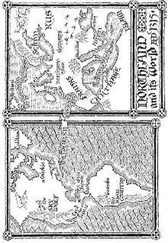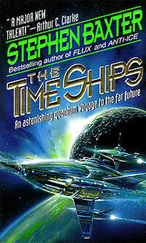Meanwhile the long cruise phase holds its own hazards as well: not too much gravity, but too little.
On Pandora we see Colonel Quaritch ferociously exercising, because, he says, low gravity makes you “soft.” He’s probably right. Without gravity pulling on your body, you would suffer what’s become known as “space adaptation syndrome.” You’d suffer immediate effects such as a redistribution of the fluids in your body, and in the longer term a wasting of your relatively unused muscles, in your legs, for example. There are other effects which appear to be permanent, such as a decrease of bone density.
To compensate, astronauts on the space stations have always tried to exercise, to put their bones and muscles under regular stress. One good recreational way to do this, incidentally, might be through contact sports like wrestling or sumo, where you stress your body against somebody else’s—I can see Quaritch putting his rookies through that, en route to Pandora.
On board Venture Star there is a higher-tech solution. The awake crew have been given artificial gravity during the cruise by that rotating “arm” turning around the ship’s spine.
It certainly would feel like gravity if you stood inside one of the compartments at either end of the arm. On Earth, the planet’s gravity is constantly pulling you down towards the centre of the world; you’re stopped from falling by the reaction of the ground beneath your feet, pushing back at you. Inside the ship’s rotating compartment the floor is similarly pushing at your feet, so it feels like a reaction against gravity. But in fact the floor is pushing to keep you moving in a circle. If the compartment suddenly dissolved and you were released, you’d go flying off in a straight line at a tangent to the circular motion—just like a bolas whirled and released by a Na’vi hunter. The artificial gravity you feel is what the engineers call a “fictitious force”; it is a “centripetal force,” which means “centre-seeking.”
As you can imagine, the faster you are whirled around by the ship’s arm the greater the apparent gravity. And also the longer the arm is, the more “gravity” you would experience—but the greater the engineering challenge, for all that spinning mass would have to be compensated for, if the ship itself wasn’t to start spinning the other way in reaction.
How much gravity is “enough” for the human body—a sixth of Earth’s like the moon, a third like Mars? We know something of the effect of extended periods of zero gravity on human physiology, but we know nothing at all about extended periods of partial gravity, as you might experience in Venture Star ’s spin module, or on low-gravity worlds like the moon, Mars and Pandora. We’ll have to find this out before we can design a ship like Venture Star .
And there’s another “fictitious” force to contend with in a spinning environment, called the Coriolis force. This acts on a moving body to curve its motion in the opposite sense to the spin. This has real consequences for us here on the turning Earth, such as the deflection of moving masses of air into weather systems. In a spinning habitat Coriolis effects will interfere with the inner ear, causing dizziness, nausea and disorientation. Experiments have indicated that at two rpm (revolutions per minute) or below, most people will suffer no adverse effects from Coriolis forces; at seven rpm or above, most people will suffer. Venture Star ’s arm turns at around three rpm—you can see this in the movie and time it—which looks a sensible compromise.
Maybe the human body is going to prove more adaptable to long-term spaceflight than we think. I once met Sergei Krikalev, the cosmonaut who holds the record for the most time in space accumulated on separate missions, an astounding eight hundred and three days. And I have to say he looked pretty healthy to me.
There would be plenty of work for the crew to do through the long cruise. There would be basic systems maintenance; in a system as complex as a starship, over such a long journey, you can bet that a lot of glitches, and even multiple failure modes where one fault compounds another, are going to crop up. This is one reason an awake human crew will be required, for their flexible problem-solving capability—evidently beating out the capabilities of even the super-advanced artificial intelligences of the twenty-second century.
And, outbound, the most essential work the alert crew will have to undertake is to care for their precious live cargo: the avatar bodies being grown in their tanks, and Jake Sully and the other (human) passengers undergoing “cryosleep,” suspended animation.
The idea of using cold to induce suspended animation—to halt, temporarily, all the body’s functions—has a long history. There have always been cases of humans being saved for example from near-drowning accidents by hypothermia, the deep chilling of the body, which induces a kind of natural cryosleep. In antiquity the pioneering doctor Hippocrates advocated packing wounded soldiers with snow to keep them alive. There is good science behind this. For every six degrees’ drop in your core body temperature your metabolic rate drops by fifty per cent.
Deep cold is already used routinely in medicine. Some tricky heart operations require that the body’s blood flow be cut off entirely, while the surgeons get on with their repair work. But at normal body temperature, brain cells can survive only five minutes or so without oxygen from the blood. After that you get brain damage, and, ultimately, death. This survival interval can be greatly extended if the patient is cooled down, to give the surgeons a chance to do their work. The technique is known as Deep Hypothermic Circulatory Arrest. Suspended animation has other potential applications, for instance for patients waiting for organ donation—or, to go back to Hippocrates, to stabilise soldiers critically wounded on the battlefield.
But there are complications. Cells can be damaged by the cold itself; Jake wouldn’t have been helped to wake up with frostbite. In the Avatar universe RDA scientists have found a way to use microwaves to “jostle” water molecules in cells, and so prevent the formation of damaging ice crystals. But even without actual damage the effects of cooling on the body are complex; humans after all are not animals that naturally hibernate. For example, immunity reactions are slowed.
For now, NASA and ESA are not funding any research into suspended animation, though both appear to be keeping an eye on developments elsewhere.
One last job for Venture Star caretaker crew, and perhaps the most glamorous, is interstellar navigation.
Navigation is the science of figuring out precisely where you are and where you’re heading. And, given the vast distances involved and the relative smallness of the target, you might imagine that navigation and some kind of mid-course corrections will be necessary during Venture Star ’s cruise.
To some extent interstellar navigation will be based on principles developed over millennia on Earth, principles we’ve already adapted as we’ve sent probes out beyond the planets, and have landed humans on the moon at target destinations with an accuracy of metres. We’ve all become used routinely to locating our positions with enormous precision thanks to the GPS system of satellites, a system consulted by smart phones and satnav systems. Conceivably, by the time Venture Star carries Jake Sully to Pandora, some chain of interstellar location beacons could be established to help a passing starship figure out its position. The receipt of pulses from beacons on Earth and at Alpha Centauri could also be useful.
Alternatively, many vehicles (and indeed modern mobile phones) carry accelerometers which can sense movement; keeping track of this allows “inertial navigation,” with which a ship computes where it must be in space simply from its internal sensing of motion. But inertial navigation systems tend to accumulate errors.
Читать дальше










